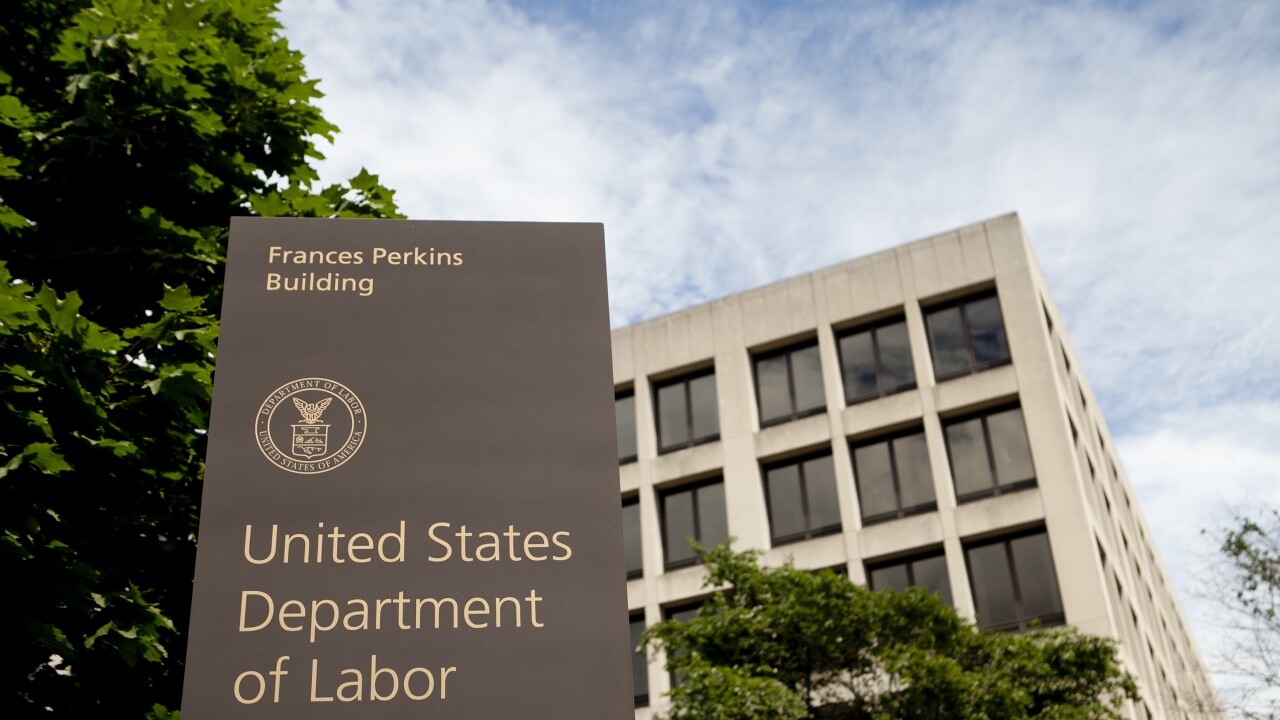by Bob Rywick
The Jobs and Growth Tax Relief Reconciliation Act of 2003 allows a taxpayer to claim a bonus first-year depreciation allowance equal to 50 percent of the adjusted basis of qualified property.
However, a taxpayer may elect out of bonus first-year depreciation entirely, or elect to claim bonus depreciation at a 30 percent rate instead of the 50 percent rate.
Recommendation: A taxpayer should consider making an election-out or reduced election where he has about-to-expire net operating losses, or expects to be in a higher tax bracket in future years.
The 50 percent bonus first-year depreciation allowance applies to the same types of property that qualified for the 30 percent bonus first-year depreciation provided by the Job Creation and Worker Assistance Act of 2002. Generally, property is eligible for the 50 percent bonus depreciation if it is:
● Tangible personal property with a MACRS or ADS recovery period of 20 years or less;
● Computer software other than software that must be amortized over 15 years under the rules of IRC § 197; or,
● Qualified leasehold improvement property (i.e., certain interior improvements to leased commercial property).
In addition, the property is eligible only if all of the following requirements are met:
1. The original use (that is, the first use to which the property is put) of the qualifying property must begin with the taxpayer after May 5, 2003. Thus, used property acquired by a taxpayer does not qualify for 50 percent bonus depreciation. However, additional capital expenditures made to recondition or rebuild acquired property would qualify.
Example 1: On June 15, 2003, your client, a calendar-year taxpayer, bought qualified property for $250,000 from a company that had previously used that property in its business. To be able to use this property in its business, your client spent $100,000 to recondition it. It placed the property in service in the third quarter of 2003.
No part of the $250,000 spent to buy the property is eligible for the 50 percent bonus depreciation. However, the $100,000 spent by your client to recondition the property is eligible. Thus, if the property is five-year MACRS property, and the half-year convention applies, your client’s total first-year depreciation deduction would be $110,000. This consists of $50,000 of bonus depreciation (50 percent of $100,000) plus $60,000 of regular depreciation (20 percent of adjusted basis of $300,000 [$250,000 cost of property plus $50,000 of reconditioning costs ($100,000 less $50,000 allowed as bonus depreciation)]).
2. The taxpayer must acquire the qualifying property after May 5, 2003, and before Jan. 1, 2005, but only if no written binding contract for the acquisition was in effect before May 6, 2003.
3. The qualifying property must be placed in service by the taxpayer before Jan. 1, 2005. However, transportation property and certain other property with a recovery period of at least 10 years may be eligible if it is placed in service before Jan. 1, 2006.
Property manufactured, constructed or produced by the taxpayer. Property that is manufactured, constructed or produced by the taxpayer for use by the taxpayer is eligible for the 50 percent bonus depreciation if the taxpayer begins the manufacture, construction or production of the property after May 5, 2003, and before Jan. 1, 2005.
If the property qualifies because it is placed in service before Jan. 1, 2006, the amount of costs that are eligible for the 50 percent bonus depreciation are limited to the adjusted basis attributable to manufacture, construction or production before Jan. 1, 2005.
Calculating depreciation on qualifying property. If a taxpayer doesn’t elect to expense qualifying property under IRC ¤ 179 (or is ineligible to make that election) the bonus depreciation allowance for that qualifying property (except property that is listed property) is simply 50 percent of the adjusted basis of the property.
In computing the balance of the depreciation allowed on the property, the adjusted basis is reduced by the bonus depreciation taken before computing the amount otherwise allowable as a depreciation deduction for the tax year and any later tax year. Thus, the regular depreciation percentages for qualified property are applied to 50 percent of its adjusted basis.
Example 2: On May 15, 2003, your client, a calendar-year business, bought and placed in service $500,000 of seven-year MACRS property that is qualified property. Your client is not eligible to expense any of the cost. Your client uses the half-year MACRS depreciation convention to determine its allowable depreciation deduction on this property for 2003, and does not elect out of its right to 50 percent bonus depreciation.
Your client may claim a total first-year depreciation deduction of $285,725 for the property ($250,000 [50 percent of total cost of $500,000] plus $35,725 [14.29 percent of $250,000 ($500,000 total cost less $250,000 bonus depreciation)]).
Observation: Regular depreciation for the placed-in-service year and all subsequent recovery years is computed on adjusted basis net of the bonus depreciation allowance. This means that the actual bonus depreciation for the first year is less than 50 percent.
Thus, in Example 2, the actual bonus depreciation for 2003 is $214,275 (total depreciation of $285,725 allowed with bonus depreciation less $71,450 [14.29 percent of $500,000], the depreciation that would have been allowed if there were no bonus depreciation). This means that the effective bonus depreciation for 2003 for seven-year MACRS property is about 42.9 percent of the cost of the property. The longer the recovery period, the higher the actual percentage bonus depreciation will be of the cost.
If IRC ¤ 179 expensing is claimed on qualified property, the amount expensed is subtracted before the 50 percent bonus depreciation allowance is computed. The taxpayer then computes regular first-year depreciation (and depreciation for future years) with reference to the adjusted basis remaining after expensing and after the bonus depreciation allowance.
Observation: The act increased the maximum amount that can be expensed in a tax year to $100,000 for property placed in service in tax years beginning after 2002 and before 2006. The act also increased the amount at which the right to expense part of the cost starts to be phased out to $400,000 for the same tax years.
Example 3: Your client, a calendar-year taxpayer, bought and placed in service $50,000 of new five-year MACRS property in the first quarter of 2003. It bought and placed in service in the third quarter of 2003 an additional $50,000 of five-year MACRS property, and $200,000 of seven-year MACRS property. All of this property is qualified property.
Accordingly, the property bought in the first quarter is eligible for 30 percent bonus depreciation, and the property bought in the third quarter is eligible for 50 percent bonus depreciation.
Your client purchases no other depreciable property in 2003. Thus, the half-year convention applies in determining regular depreciation. Your client wishes to maximize its allowable deductions (expensing and depreciation) with respect to the purchase of the MACRS property for 2003.
Accordingly, it elects to expense the $50,000 of five-year MACRS property bought in the first quarter, since this is not eligible for 50 percent bonus depreciation. It also elects to expense $50,000 of the $200,000 of seven-year MACRS property that it bought in the third quarter. Bonus depreciation of $75,000 is allowed with respect to the remaining seven-year MACRS property (50 percent of $150,000 [$200,000 total cost less $50,000 expensed]). Bonus depreciation of $25,000 is allowed with respect to the five-year MACRS property placed in service in the third quarter of 2003 (50 percent of $50,000).
Regular depreciation of $10,718 is allowed on the seven-year MACRS property placed in service in the third quarter (14.29 percent of $75,000 [total cost of $200,000 less $50,000 expensed, less $75,000 of bonus depreciation]). Regular depreciation of $5,000 is allowed on the five-year MACRS property placed in service in the third quarter (20 percent of $25,000 [total cost of $50,000 less bonus depreciation of $25,000]).
The total allowable deduction for expensing and depreciation on the MACRS property placed in service by your client in 2003 is $215,718. This is the sum of the following:
● $50,000 expensed on the five-year MACRS property placed in service in the first quarter;
● $50,000 expensed on the seven-year MACRS property placed in service in the third quarter;
● $75,000 bonus depreciation on the seven-year MACRS property placed in service in the third quarter;
● $25,000 bonus depreciation on the five-year MACRS property placed in service in the third quarter;
● $10,718 regular depreciation on the seven-year MACRS property placed in service in the third quarter; and,
● $5,000 regular depreciation on the five-year MACRS property placed in service in the third quarter.
Observation: To maximize the total deductions allowed for expensing and depreciation in the taxable year of a taxpayer, expensing should usually be elected for property with the longest recovery period. However, if some of the property is eligible for 50 percent bonus depreciation and other property is not eligible, then expensing should be elected for the ineligible property first.
Example 4: The same facts apply as in Example 3, except that your client elects to expense $100,000 of the seven-year MACRS property placed in service in the third quarter, and to take the 30 percent bonus depreciation on the five-year MACRS property placed in service in the first quarter.
The client’s total allowable deductions for 2003 for expensing and depreciation will be only $209,145, instead of the $215,718 allowed if the five-year MACRS property bought and placed in service in the first quarter is expensed. This is computed as follows:
● $22,000 total depreciation on the five-year MACRS property placed in service in the first quarter (bonus depreciation of $15,000 [30 percent of $50,000] plus regular depreciation of $7,000 [20 percent of $35,000]);
● $100,000 expensing on the seven-year MACRS property placed in service in the third quarter;
● $50,000 bonus depreciation on the seven-year MACRS property placed in service in the third quarter;
● $7,145 regular depreciation (14.29 percent of $50,000) on the seven-year MACRS property placed in service in the third quarter;
● $25,000 bonus depreciation on the five-year MACRS property placed in service in the third quarter; and,
● $5,000 regular depreciation on the five-year MACRS property placed in service in the third quarter.





